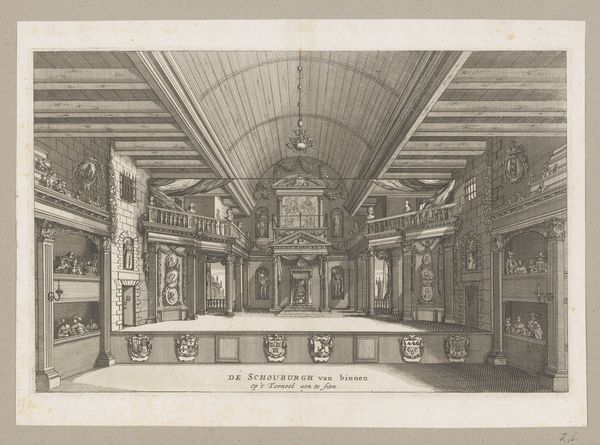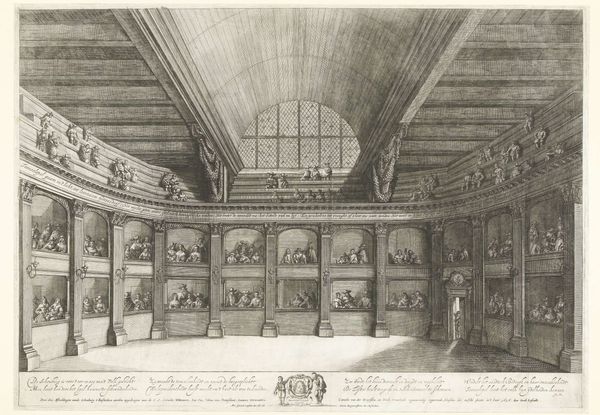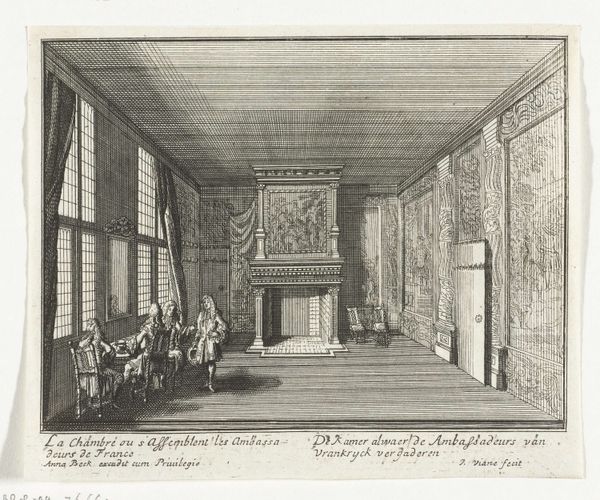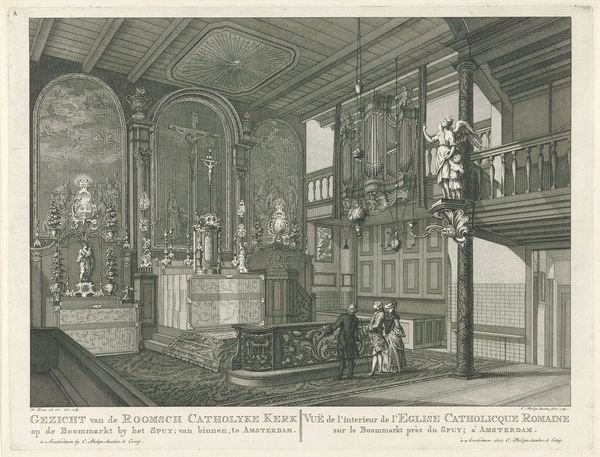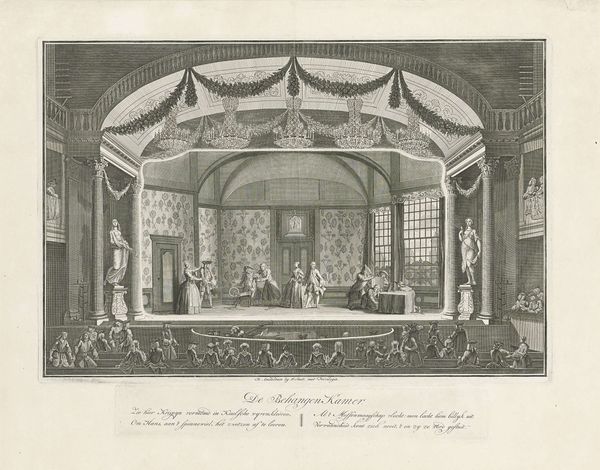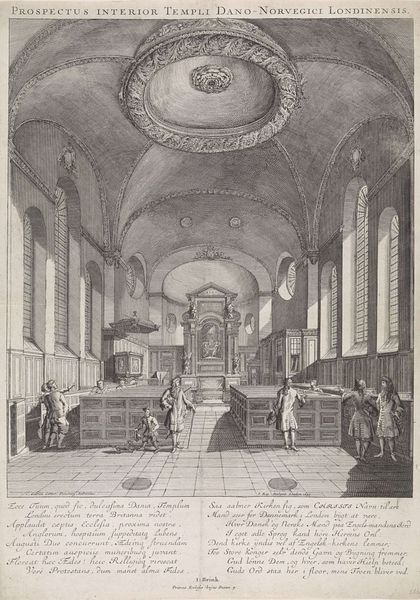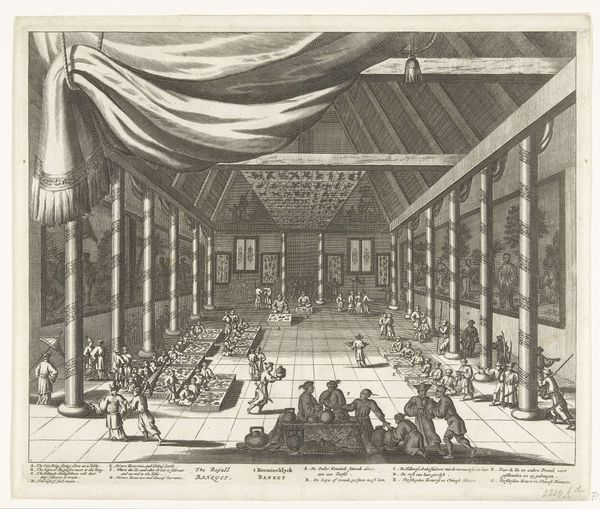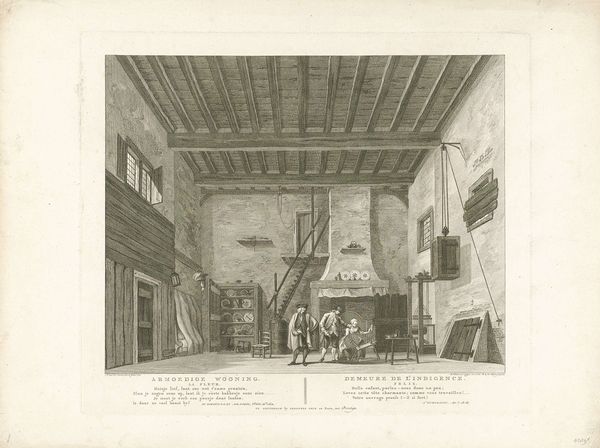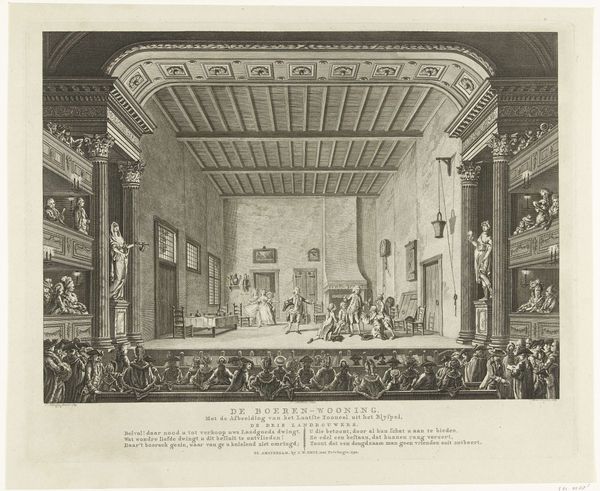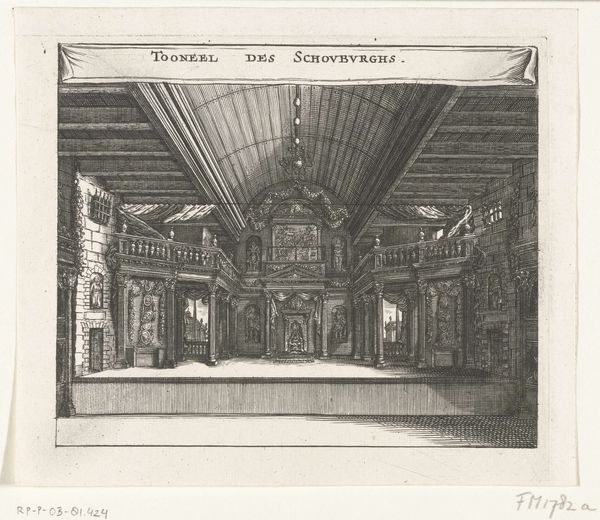
print, engraving
#
baroque
# print
#
old engraving style
#
personal sketchbook
#
cityscape
#
history-painting
#
engraving
Dimensions: height 515 mm, width 733 mm
Copyright: Rijks Museum: Open Domain
Curator: This engraving, created by Salomon Savery in 1658, depicts "Toneel van de nieuwe schouwburg te Amsterdam, 1637" which translates to “Scene of the New Theater in Amsterdam, 1637.” It's currently housed in the Rijksmuseum. What catches your eye first? Editor: The sense of receding space. All those linear details give a dramatic and theatrical feel—the boxes on either side and that vaulted wooden ceiling—pulling the eye straight back. The chandeliers, statuary, and ornamentation lend the space such formality. Curator: Indeed. The New Amsterdam Theater was designed by Jacob van Campen, reflecting the classical ideals influencing Amsterdam's architecture in the 17th century. Savery’s work really shows us what the physical space of the theater looked like. Consider the social function of the theater, not merely as a site of entertainment, but also a venue for civic display. Editor: Absolutely. You see visual echoes of Roman theaters – almost a symbolic architectural recall of a golden age of culture meant to evoke something larger for the Dutch Republic, right? But also all of these emblems adorning the theatre--like the carved cartouches or shields with mottos on the lower stage. It’s practically a catalog of symbolism. What were they meant to convey to audiences of the day? Curator: Well, theater programs back then often contained explicit moral or political messaging, something that resonates within civic republicanism. These heraldic displays could allude to virtues the audience should embody, for instance. The theater, therefore, functions almost as a didactic instrument in service of Amsterdam society. Editor: It feels less like simple "entertainment" than like something meant to actively construct communal memory or identity through symbol and performance. One notices repeated images of classical statuary as well as images from scripture and the coat-of-arms. It shows a symbolic fusion, I think. A blend of sacred stories and family or guild history playing out on a civic stage. Curator: Exactly. Savery's engraving isn't just about preserving architectural accuracy, but the theater’s integration within a developing national identity in Amsterdam. It's about public art and collective engagement in cultural norms. Editor: This wasn’t mere escapism. Looking closer at these layers gives insight into the mindset of the artist and their contemporary society. Curator: Well said, our visual journey into this historic Amsterdam theater reveals layers of significance beyond what is on the surface. Editor: Definitely. Savery offers not only a picture but a portrait of the civic values and beliefs alive in 17th-century Amsterdam.
Comments
No comments
Be the first to comment and join the conversation on the ultimate creative platform.
